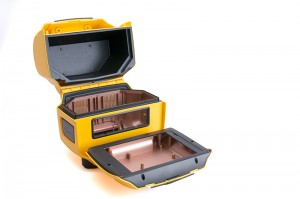Sometimes the question isn’t “why?” Sometimes the question is “why not?”
This is certainly true when it comes to determining which tooling option to use to produce small quantities of prototypes or production for form or fit testing. When this is the case, the question is definitely, “Why not use RTV molding?”
While RTV molding isn’t right for every project, it is efficient and relatively inexpensive for manufacturing small-quantity prototypes for marketing, pre-production testing and even low-volume productions.
How RTV Molding Works
RTV molding starts with a master pattern made from FDM patterns, a Polyjet, a machined part or an existing part. The master pattern is then covered in liquid silicone, which becomes the mold. Next, the mold is injected with a urethane that matches the desired mechanical properties. After the urethane has hardened, the part is removed and then delivered.
The RTV Numbers that Matter
The entire process takes between five and seven days — from the time an order is placed to the time the part is delivered — to complete. It’s usually effective for projects that require anywhere from one to 35 parts to be produced, although the number can be higher depending on which type of silicone is used. Once the mold has been created, the part can be painted any color with a designated Pantone number (or color chip).
The Benefits of RTV Molding
The benefits of RTV molding are economic, as well as utilitarian. One mold generally costs between one-fifth and one-half of what a prototype injection would cost. And while RTV molding costs less, it also provides more options. Because the molding process isn’t automated and uses “soft” tools, the process is simpler, meaning more mold options can be tried and more experimentation can take place. And if it turns out that a mold doesn’t work, it costs a lot less and takes a lot less time to make changes.
There are, of course, many more reasons to use RTV molding — casting in color, the ability to mold complex shapes and the availability of secondary machinery, so contact PDS today for more information.

